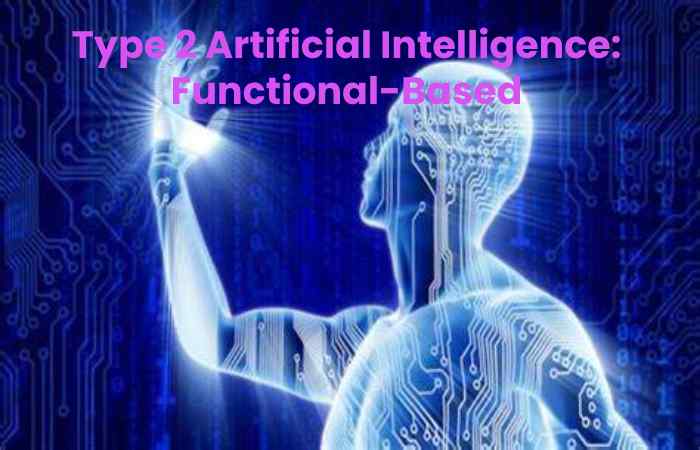Types of AI: Artificial intelligence can remain categorized into several different subtypes. However, the two primary categories remain based on an AI’s capabilities and functionalities. The flowchart that follows explains the many categories of AI.
Table of Contents
Artificial intelligence (AI) Types
Based on Capabilities, Type 1 AI
- Weak AI or Narrow AI: Narrow AI is a subset of AI that can intelligently carry out a certain task. In artificial intelligence, narrow AI is the most prevalent and readily available AI.
Since narrow AI stays only taught for a single job, it cannot accomplish tasks outside its domain or set of constraints. As a result, it is often known as weak AI. If narrow AI expands beyond its limits, it may fail in unexpected ways.
Apple Siri is a fantastic example of narrow artificial intelligence, yet it only does a small set of pre-defined tasks. Given that it combines an Expert system method with machine learning and natural language processing, IBM’s Watson supercomputer also falls under the category of Narrow AI.
Some examples of narrow AI are playing chess, receiving recommendations for purchases on an e-commerce site, self-driving automobiles, speech recognition, and image identification.
2. AI in general
An intelligence called general artificial intelligence (GAI) is capable of doing any intellectual job as effectively as a person. Overall, AI aims to create a system that is intelligent enough to think like a person on its own. However, no system falls under general AI that can carry out every work and person.
Researchers from all across the world are currently concentrating on creating general AI devices. However, as generic AI systems remain researched, constructing such systems will take time and resources.
3. Super AI
Super AI is a degree of system intelligence where computers can outperform people in any task thanks to their cognitive abilities. It results from generic AI.
Strong AI can understand, reason, solve puzzles, make judgments, plan, learn, and communicate independently, among other crucial features.
Type 2 Artificial Intelligence: Functional-Based

1. Automatic Machines
The most fundamental forms of artificial intelligence are only reactive robots. Such artificial intelligence systems don’t retain memories or past experiences for future use.
These machines concentrate on the present situation and respond in the best way possible.
Reactive machines, like IBM’s Deep Blue system, can be seen in action.
Reactive machines are another example, such as AlphaGo from Google.
Small Memory
Machines with a small amount of memory can temporarily store some data or memories of the past.
These devices can only access saved data for a short time.
One of the best instances of Limited Memory systems is self-driving automobiles. These vehicles have memory capabilities for the most recent speed of vehicles in their vicinity, their distance from other vehicles, and information on the speed limit and other road-related matters.
Concept of Mind
With a theory of mind, AI should be able to interact socially with humans and comprehend human emotions, people, and opinions.
Although this AI robot has not yet remained built, researchers are working hard to advance its capabilities.
Fourth, self-awareness
Self-awareness Future of artificial intelligence is AI. They will be extremely clever and possess consciousness, feelings, and self-awareness.
These devices will be more intelligent than a human mind.
Self-Awareness AI is still a theoretical idea and does not now exist in reality.
Conclusion:
A data-centric MLOps platform, Basic AI Xtreme1 lets you quickly construct and iterate your AI model. Your entire AI lifecycle remains handled with automation, manageability, and repeatability. It is all-in-one. It is effortless.
Also read : Arris G36 Cable modem Combination
Related posts
Featured Posts
Brooks Launch 8 Women
Brooks Launch 8 Women: The Brooks Launch 8 is an impartial lightweight cushioned trainer. The Launch 8 can be a quick…
What is Marketing Icon
Marketing Icon: A marketing Icon is everything in the marketing world. If you want to capture marketing budgets, marketing with…

